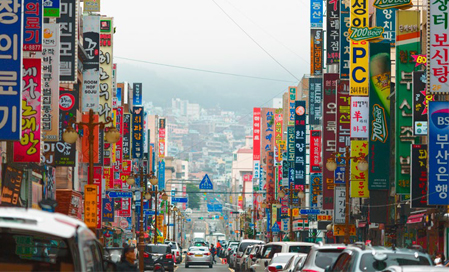South Korea’s lift-off to development: The role of Human Capital and Productivity in economic growth, 1960-1979
Main Article Content
Keywords
South Korea, Economic growth, Human capital, Solow Model, Productivity
Abstract
South Korea is a case of impressive economic growth: a previously underdeveloped country that, after the 1960s, embarked on a process to achieve development before other underdeveloped countries. South Korea is also a case where innovation processes move from imitation to self-creation thanks to a quick updating or “catching up” process.
South Korea’s journey from underdevelopment to development has sparked a rich and well-founded debate within economic theory. These debates weigh the roles of productive factors (Physical, Human, Social, and Financial Capital, Labor, resources, environment), economic agents (State, Firms, Banks), and international trade factors (FDI, Imports, Exports) on its growth process.
The central argument of this article establishes that Capital is the central variable that explains the successful outcome of the Korean growth miracle. However, Capital composition is even more important. The impact of Human Capital on the growth process evinces a synergy with Knowledge development. We modify the Solow model using Human, Physical Capital, and Total Factor Productivity as independent variables in a Multivariable Regression Model for the period between 1960 and 1979 on Output per worker. We conclude that Human Capital and Productivity are just as important as Physical Capital for explaining growth per worker in South Korea due their synergistic properties. The study is restricted to the years prior to Park Chung-Hee’s rise to power and ends with his assassination.
Downloads
References
Berg, A. & Krueger, A. (2002). Dar vela al comercio. Revista Finanzas y Desarrollo, pp. 16-19.
Booth, A. (1998). Initial Conditions and Miraculous Growth: Why is South East Asia Different from Taiwan and South Korea? recovered from https://www.soas.ac.uk/economics/research/.../file28887.pdf.
Feenstra, Robert C., Robert Inklaar and Marcel P. Timmer (2015), "The Next Generation of the Penn World Table" American Economic Review, 105(10), 3150-3182, available for download at www.ggdc.net/pwt
Frank, C., Kim, Kwang Suk & Westphal, L. (1975). Foreign Trade regimes and Economic Development. Cambridge: NBER Editions.
García Blanch, F. (2001). An Empirical Inquiry into the Nature of South Korean Economic Growth. Center for International Development at Harvard University Working Papers, No. 74.
Harvie, C. (2006). Sources of Economic Growth in South Korea: An Application of the ARDL Analysis in the Presence of Structural Breaks 1980-2005. V conference Korea and the World Economy, Korea University, Seoul, Korea.
Heng Siam-Heng, M. (2010). The 2008 Financial Crisis and the Flying Geese Model. EAI Working Paper No. 156.
Jeong, Jin-Young (1991). Large-scale company group and fair-trade system. Seoul: National Institute for Economic System and Information.
Kasahara, S. (2013). The Asian Developmental State and the Flying Geese Paradigm. UNCTAD Discussion Papers.
Kim, K. (1991). The Korean Miracle (1962-1989) Revisited: Myths and Realities in Strategy and Development. The Helen Kellog Institute for International Studies for International Studies, Discussion Paper #166.
Krugman, P. (1994). The Myth of Asia’s Miracle. Foreign Affairs Review, Nov-Dec. No. 73, 6. ABI/INFORM Global, pp. 62-78.
Noland, M. (2011). Korea’s Growth Performance: Past and Future. East-West Center Working Papers No 123Ozawa, T. (2005). Asia’s Labor-Driven Economic Development, Flying-Geese Style: An Unprecedented Opportunity for the Poor to Rise? Discussion Paper No. 40. APEC Study Center, Columbia University.
Romer, D. (2012). Advanced Macroeconomics. Fourth Edition. The McGraw Hill Series in Economics, New York.
Sanguinetti, P. (2009). Comercio internacional y crecimiento económico en Chile. Periodo 1830-2000. Tesis para optar al grado de Magíster en Economía. Santiago: Universidad Católica de Chile.
Stiglitz, J. (2003). El Rumbo de las Reformas. Hacia una Nueva Agenda para América Latina. Revista de la CEPAL N° 80, pp.7-40.
Voegeli, K. (No Year). Economic Growth through the Development Process: The Case of South Korea. Bachelor Thesis. Institute for Empirical Research in Economics, Switzerland: University of Zurich.
Weiss, J. (2003). Industrialization in an age of globalization: some comparisons between East and Southeast Asia and Latin America, recovered from http: siteresources.worldbank.org/EXTEXPCOMNET/.../17_Weiss.pdf.

